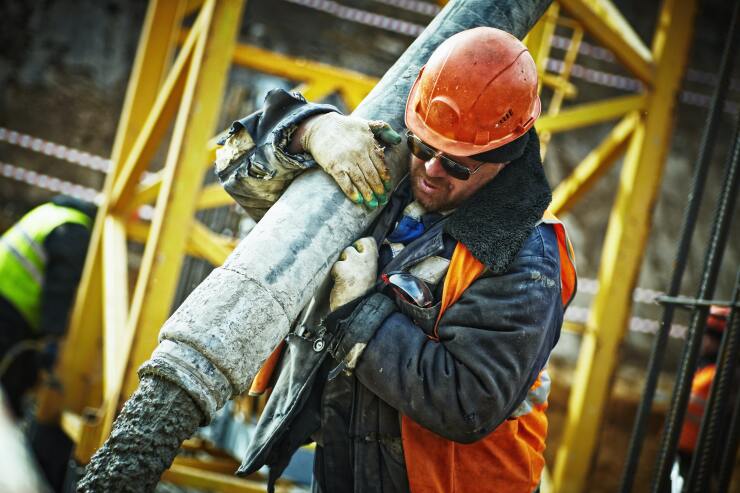The Great Resignation has impacted every industry in the U.S. as workers continue to demand better compensation, benefits and treatment from their employers — and the construction industry is no exception.
Associated Builders and Contractors estimates an over half-million construction worker shortage in 2022. Meanwhile, demand for construction workers is only expected to rise beyond this year, especially after President Biden signed the Infrastructure Investment and Jobs Act, which is investing $1.2 trillion in construction projects across the country.
While filling these roles seems daunting for employers, tapping into union-backed talent has been found to more easily bridge these gaps. Union construction firms are 16% less likely to report difficulty in filling open positions, 13% less likely to fail in retaining skilled workers and 21% less likely to report project delays due to retention issues,
Read more:
“The union segment of the industry offers competitive earnings and benefits that rival those with a bachelor's degree,” says Frank Manzo IV, the executive director of the Illinois Economic Policy Institute and co-author of the study. “Non-union construction workers are more likely to live in poverty and rely on government assistance. It’s a simple fact that the non-union contractors have just not been competitive in the current labor market.”
The study examined 1,768 union contractors and 3,893 non-union contractors between 2018 and 2021, noting that on average, skilled union construction workers earned 42% higher wages, were 34% more likely to have private health insurance and 6% less likely to live in poverty or rely on Medicaid. Larissa Petrucci, a postdoctoral research associate with the Project for Middle Class Renewal, underlines how these numbers show a correlation between poor working conditions and the labor shortage. And as conditions improve, so do the company’s
“We are able to see the ways in which certain workplaces are able to keep workers when there's a union present,” says Petrucci. “Beyond just salary, union contracts usually have much better health insurance coverage, leave and other benefits that are really important, especially in the context of a crisis like COVID.”
The difference between union and non-union firms even extends to their training programs. Union apprenticeship program funding is privately negotiated in collective agreements between contractors and workers, and the set rate per hour is an employer contribution. Non-union programs rely entirely on voluntary contributions.
“Because they're voluntary, these programs are often poorly funded because contractors have incentives to cut those investments in order to lower their costs and win short-term bids [for a project],” says Manzo. “This leads to some productivity and safety concerns.”
Read more:
While Manzo notes that contractors are universally experiencing supply chain issues, whether it be material shortages or delivery delays, the data shows that union contractors are less likely to have project delays due to a lack of skilled workers, which incidentally saves contractors money. But Petrucci argues that non-union contractors fail to think beyond short-term gains.
“They may be thinking it’s cheaper for them to not supply their workers with great training or higher wages, but ultimately it costs you to not retain your workers,” says Petrucci. “You have better project completion, safer work sites and lower turnover rates when you invest in your workers.”
The construction industry was already struggling to maintain a skilled workforce before the pandemic, perhaps due to the lack of unions in the construction industry — the Bureau of Labor Statistics estimates that 87% of the construction industry does not belong to a union. As employees demand more from their employers, the structure of a union is suited for today’s labor force, Petrucci says.
Read more:
“The whole point of having a union is that you have a right to collective bargaining, which means that workers do have a voice in the workplace,” says Petrucci. “When workers collectively organize together, they can bring shared issues to the table and push for better benefits. They know their power as workers and how much their employer depends on their labor.”
Manzo encourages every contractor in need of skilled labor to work with union construction firms, and invest in training programs. But private business decisions alone will not fix the labor shortage in the construction industry. Manzo also hopes to see the expansion of prevailing wage laws, which establish minimum wages, benefits and training contributions to different types of skilled construction workers on taxpayer-funded and taxpayer-subsidized projects. This would at least ensure contractors were paying middle-class wages, says Manzo.
“The superior outcomes reported by union firms reveal that long-term investments in job quality and apprenticeship training are every bit as critical to the success of a construction employer,” he says. “If you want to increase the chances that a project is completed on time and safely, you should look to hire union contractors.”






